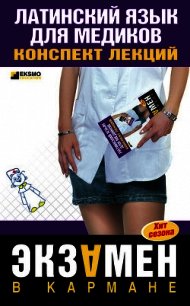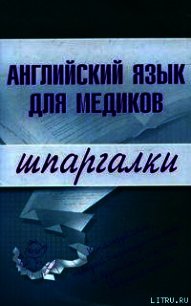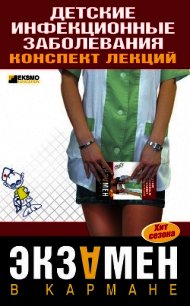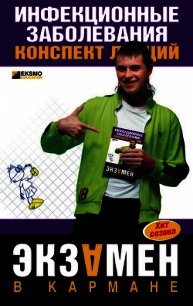Английский язык для медиков: конспект лекций - Беликова Елена (книги хорошего качества TXT) 📗
ЛЕКЦИЯ № 8. Muskular system
Skeletal (voluntary) system.
The dermomyotome further differentiates into the myotome and the dermatome.
Cells of the myotome migrate ventrally to surround the intraembry-onic coelom and the somatic mesoderm of the ventrolateral body wall. These myoblasts elongate, become spindle-shaped, and fuse to form multinucleated muscle fibers.
Myofibrils appear in the cytoplasm, and, by the third month, cross-striations appear. Individual muscle fibers increase in diameter as myofibrils multiply and become arranged in groups surrounded by mesenchyme.
Individual muscles form, as well as tendons that connect muscle to bone.
Trunk musculature: By the end of the fifth week, body-wall musculature divides into a dorsal epimere, supplied by the dorsal primary ramus of the spinal nerve, and a ventral hypomere, supplied by the ventral primary ramus.
Epimere muscles form the extensor muscles of the vertebral column, and hypomere muscles give rise to lateral and ven tral flexor musculature.
The hypomere splits into three layers. In the thorax, the three layers form the external costal, internal intercostal, and transverse thoracic muscle.
In the abdomen, the three layers form the external oblique, internal oblique, and transverse abdomii muscles. Head musculature.
The extrinsic and intrinsic muscles of the tongue are thought to be derived from occipital myotomes that migrate forward.
The extrinsic muscles of the eye may derive from preoptic myoto-mes that originally surround the prochordal plate.
The muscles of mastication, facial expression, the pharynx, and the larynx are derived from different pharyngeal arches and maintain their innervation by the nerve of the arch of origin.
Limb musculature originates in the seventh week from soma meso-derm that migrates into the limb bud. With time, the limb musculature splits into ventral flexor and dorsal extern groups.
The limb is innervated by spinal nerves, which penetrate the limb bud mesodermal condensations. Segmental branches of the spinal nerves fuse to form large dorsal a ventral nerves.
The cutaneous innervation of the limbs is also derived from spinal nerves and reflects the level at which the limbs arise.
Smooth muscle: the smooth muscle coats of the gut, trachtea, bronchi, and blood vessels of the associated mesenteries are derived from splanchnic mesoderm surrounding the gastrointestinal tract. Vessels elsewhere in the body obtain their coat from local mesenchyme.
Cardiac muscle, like smooth muscle, is derived from splanchnic mesoderm.
New words
migrate – мигрировать
ventral – брюшной
to surround – окружать
somatic – соматический
cytoplasm – цитоплазма
spindle-shaped – веретенообразный
to fuse – плавить
cross-striations – поперечные бороздчатости
to appear – появляться
extensor – разгибающая мышца
dorsal – спинной
primary – первичный
ramus – ветвь
split – раскол
extrinsic – внешний
intrinsic – внутренний
vertebral – позвоночный
arche – дуга
abdomen – живот
facial – лицевой
expression – выражение
to penetrate – проникать
segmental – сегментальный
branch – ветвь
Запомните следующие застывшие словосочетания.
In the middle
In the corner
To the right
To the left
Вставьте артикль, где необходимо.
1. There is… thick red… carpet in my… room… carpet is on… floor in… front of… sofa
2. Where is… table? – His… table is near… window.
3. I can see… fine… vase on… shelf. Is it your… vase?
4. We have no… piano in our… living-room.
5. My… uncle is… married. He has… beautiful wife. They have… son, but they have no… daughter.
6. I can see… nice… coffee-table in… middle of… room to… right of… door. It is. black and. red. I like… coffee-table.
7. Our… TV-set is on… little… table in… corner of… room.
8. There is… beautiful picture in my father's… study… picture is on… wall to… left of… window.
9. My aunt's flat is in. new house.
10. There is… living-room,… bedroom,… study,… bathroom and… kitchen in… flat.
11… bedroom is… large room with… two windows.
12… room is light as… windows are large.
13. There are… white curtains on.windows.
14. There are… two beds with. large pillows on them.
15. There are… small tables near… beds.
16. There are… lamps on them. To the left of… door there is… dressing-table with. looking – glass on it.
17. There is… low chair at the dressing – table.
18. There are… several pictures on… pale green walls.
19. There is… thick carpet on… floor.
20… carpet is dark green… room is very cosy.
Answer the questions.
1. What does the muscular system consist of?
2. What surround the intraembryonic coelom?
3. What form do myoblasts become?
4. Where myofibrils appear?
5. By what week body-wall musculature are divided?
6. What is the limb innervated by?
7. What does trunk musculature consist of?
8. Where is the cutaneous innervation of the limbs derived from?
9. Where is cardiac muscle derived from?
10. What do smooth muscles coat?
Make the sentences of your own using the new words (10 sentences).
Find the definite and indefinite articles in the text.
Find one word, which is a little bit different in meaning from others (найдите одно слово, которое немного отличается от других по смыслу):
1) a) abdomen; b) back; c) belly;
2) a) last; b) primary; c) first;
3) a) facial; b) lateral; c) appearance;
4) a) textbook; b) backbone; c) vertebral;
5) a) dark; b) night; c) day.
ЛЕКЦИЯ № 9. Skeleton
The bones of our body make up a skeleton. The skeleton forms about 18% of the weight of the human body.
The skeleton of the trunk mainly consists of spinal column made of a number of bony segments called vertebrae to which the head, the thoracic cavity and the pelvic bones are connected. The spinal column consists of 26 spinal column bones.
The human vertebrae are divided into differentiated groups. The seven most superior of them are the vertebrae called the cervical vertebrae. The first cervical vertebra is the atlas. The second vertebra is called the axis.
Inferior to the cervical vertebrae are twelve thoracic vertebrae. There is one rib connected to each thoracic vertebrae, making 12 pairs of ribs. Most of the rib pairs come together ventrally and join a flat bone called the sternum.
The first pairs or ribs are short. All seven pairs join the sternum directly and are sometimes called the «true ribs». Pairs 8, 9, 10 are «fal-se ribs». The eleventh and twelfth pairs of ribs are the «floating ribs».
Inferior to the thoracic vertebrae are five lumbar vertebrae. The lumbar vertebrae are the largest and the heaviest of the spinal column. Inferior to the lumbar vertebrae are five sacral vertebrae forming a strong bone in adults. The most inferior group of vertebrae are four small vertebrae forming together the соссух.
The vertebral column is not made up of bone alone. It also has cartilages.
New words
skeleton – скелет
make up – составлять
weight – вес




